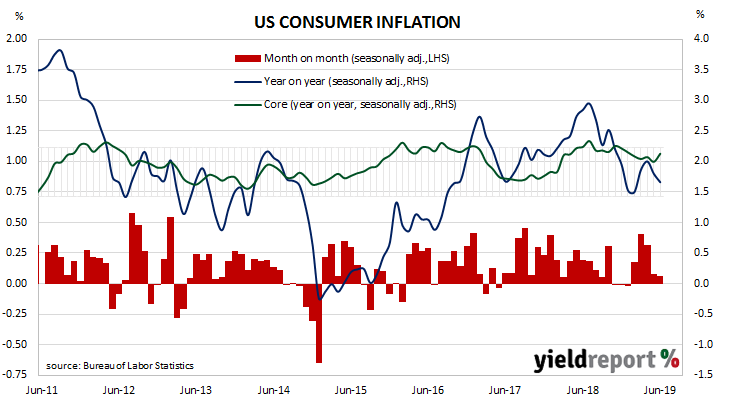The annual rate of US consumer inflation halved from nearly 3% in the period from July 2018 to February 2019 and then subsequently fluctuated in a range from 1.5% to 2.0%. However, “headline” inflation is known to be volatile and so reference is often made to “core” inflation figures. This measure has mostly ranged between 1.7% and 2.3% in recent years and it has not been below 2.0% since early 2018.
The latest consumer price index (CPI) figures released by the Bureau of Labor Statistics indicated seasonally-adjusted consumer prices increased on average by 0.1% in June, which is more than the consensus figure but the same as May’s increase. On a 12-month basis, the inflation rate slowed from May’s annual rate of 1.8% to 1.7%.
ANZ economist Kishti Sen said, “While data flow out of the US continues to pour the occasional bucket of cold water on US rate cut expectations, worrying signs over upstream inflation pressures remain.”

Core inflation, a measure of inflation which strips out the volatile food and energy components of the index, increased on a seasonally-adjusted basis by +0.3% for the month, higher than the 0.2% increase which had been expected and higher than May’s +0.1%. As a result, the annual rate ticked up to 2.1%, an increase on May’s comparable figure of 2.0% and more than the 2.0% consensus expectation.

